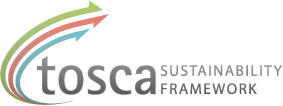Value chain activities
- Identify your product value chain
- Strategy & organisation
- Upstream supply chain
- Own manufacturing
- Customers and consumers
- Develop more sustainable products
- End-of-life of products
- Other stakeholders
Navigation by keywords
Further reading: Stage-Gate® model
Many sustainability concerns, such as energy and resource efficiency as well as waste minimization, are also economic issues. Environmental considerations early in the product development process could offer more competitive and sustainable products to the market and avoid having to correct potential environmental problems after the product has been launched.
Sustainability requirements and aspects should therefore be integrated in the normal operational procedures and toolboxes in the product development process. One commonly used approach in product development projects are Stage-Gate® alike models.
The common purpose of the Stage-Gate® model is to provide a framework for better management of projects and to ensure that the important success factors of the project are dealt with. Many companies use their own variant of the Stage-Gate® model, but they are basically designed in the same way and based on the same principles. Examples of implementation of Stage-Gate® models are presented here.
The Stage-Gate® model is built by Stages and Gates.
Stages are periods of activity within a project and involve many different project team members. In order to proceed from one stage to the next, a gate has to be passed.
Gates are passed during gate review meetings, which is when the project team decides whether the predefined Gate criteria have been met based on key decision points with well defined “Go/Kill” criteria. The criteria for all of the Gates during the project are selected at the start of the project and they should cover important aspects such as market and financial attractiveness, technical feasibility, supply options, health, safety and environmental (HSE) as well as regulatory aspects.
It is only possible to give some indications on resource demands for setting up and maintain this procedure. There are great variations depending on type of company and product.
The first “one time investment” to include sustainability aspects into your own Stage-Gate® model should be a relatively limited working task, since this is more a question of achieving a management commitment.
The second “one time investment” , to build a supporting toolbox is more resource demanding. The DANTES toolbox (at www.dantes.info) can be used to get a quick start. Nevertheless, resources will be needed to create the toolbox and organize the supporting organization. The most critical aspect here is to decide how to maintain this support system on a long-term basis.
The resource demand for implementation of sustainability aspects in each product development project can vary much, from hours/days to several weeks/months of work depending on type of product.
Training programs may be needed, since sustainability is often a new competence area for many of those involved in product development.

